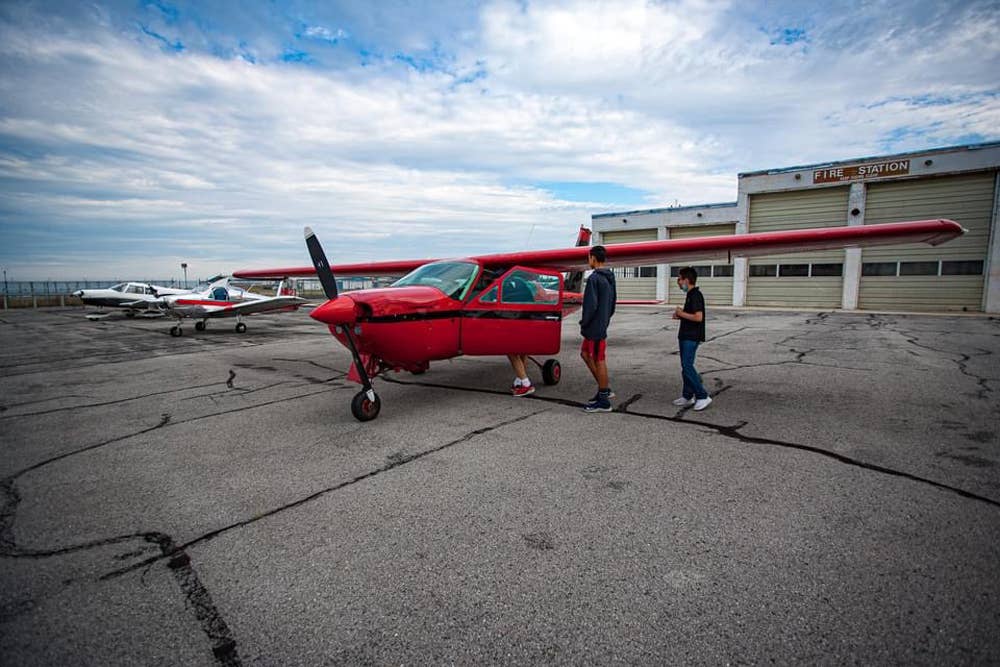
Even hosting a flying event for young people requires more preparation—and vetting—prior to inviting kids onto the airport. Stephen Yeates
If you didn’t fly into KDCA—now Ronald Reagan Washington National Airport—before September 11, 2001, you’re still out of luck as a general aviation pilot. You’ll need to be crew on an airline flight, or obtain a special clearance, in order to land at the nation’s iconic airport on the banks of the Potomac River.
That’s just one of the privileges we’ve sacrificed after one bright blue autumn morning 20 years ago this week.
Four other changes we’ve navigated since then:
1. TFRs took on new meaning.
While pilots used to wade through notams with an interest toward out-of-service navigational aids and unlit towers, temporary flight restrictions (TFRs) popped up like mushrooms after the rain following September 2001.
Pilots joked at the time that the call to Flight Service on 1-800-WX-BRIEF should really change to “1-800-Check-Notams.” Not only do presidential movements trigger TFRs, but also sporting events at NFL, NBA, and Division I NCAA stadiums and facilities.
Now we consider graphic TFRs a required feature on ForeFlight and flight decks alike.
2. The “DC3” still live in the FRZ.
Following the massive airspace closure on September 11, at least one permanent restricted area remains in effect to this day: the 15-nm ring centered on the U.S. Capitol in Washington, D.C.
While large airports such as KDCA and Joint Base Andrews (KADW) have their own special procedures for airline, military, and government ops, the three GA airports within the FRZ (“freeze”) went from closure to opening only to based aircraft over the course of several months.
Still, College Park Airport (KCGS), Potomac Airfield (KVKX) and Washington Executive-Hyde Field (W32) continue to thrive under somewhat reduced circumstances. Today, non-based pilots can apply for the code to fly in—but they still need to pass a security check in order to do so.
3. Getting a pilot certificate—or upgrading—requires extra preparation.
Because a few of the terrorists identified in the attack spent a minor amount of time training at flight schools in the U.S., training organizations today must still complete extra steps before accepting a prospective student for training.
For U.S. citizens, showing a passport will generally suffice, but for those coming in from outside the country to train for a certificate or upgrade into an aircraft weighing more than 12,500 pounds, a more involved background check is required.
Flight instructors must also complete a security training session as part of their certificate renewal every two years.
4. Many airports have lost the serendipity of the “kid at the airport fence.”
It’s hard to pin an exact number on this one, but 20 years ago, fewer airports outside of major metropolitan areas were enclosed with more than a cursory fence and a gate that was rarely locked.
Following 9/11, many airports gained a perimeter worthy of a correctional facility, as well as coded or badged access.
While there are a variety of sound reasons to limit airport incursions—including wildlife mitigation and general security from theft—we’ve lost the happenstance that led people harboring an enthusiasm for aviation into joining our ranks.
What We Still Have
It’s easy to focus on what we’ve lost—but we also regained key privileges in the months and years that have passed.
After September 11, every one of the 30 areas of Class B airspace became “enhanced” with prohibitions against VFR flight—and 25-nm no-fly zones were instituted around Washington, D.C., and New York City. Within a couple of months, those zones were dialed back, allowing VFR operations, including flight training in aircraft weighing less than 12,500 pounds, to take place within most of them. Today, most Class B operates in much the same way as it did before the attacks.
We also went through a short period of “nuclear TFRs” establishing 10-nm no-fly zones around key nuclear power plants and other sites across the U.S. The action effectively closed roughly 100 airports. Through the lobbying efforts of pilot associations such as AOPA, NBAA, and others, these restrictions were pulled back about a week later.
Procedures to fly around Washington, D.C., have stabilized, and while training programs are required to fly inside the special flight rules area (SFRA), clear instructions and establishment of “gates” have streamlined the process somewhat.
In general, we retain the freedom to fly with fewer restrictions in the U.S. than in most other places in the world.
What privileges do you hold most dear? Share your observations with us.

Sign-up for newsletters & special offers!
Get the latest FLYING stories & special offers delivered directly to your inbox






